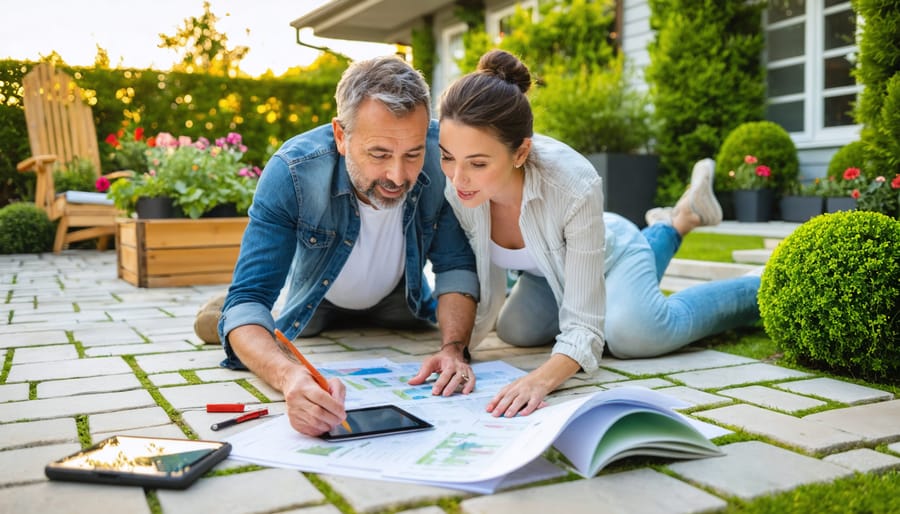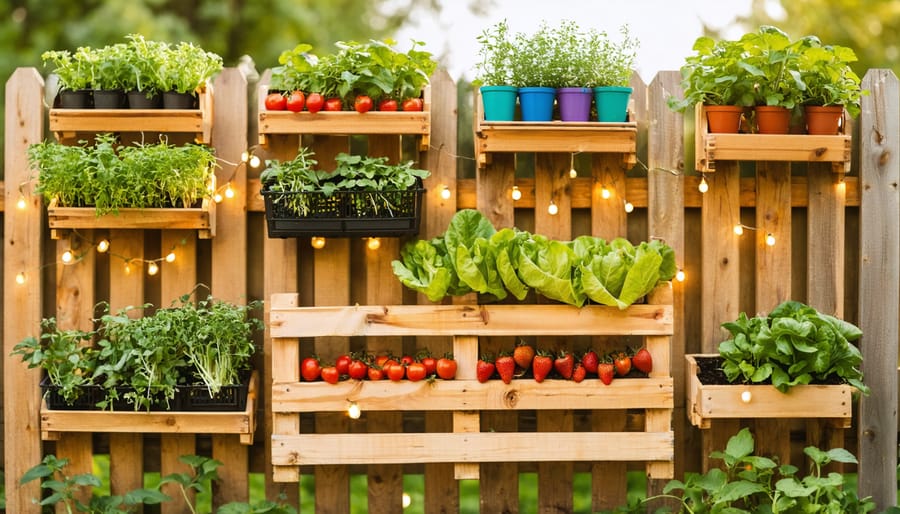Sustainable interior design revolutionizes how we create living spaces by harmoniously blending nature with modern living. Through thoughtful material selection, energy-efficient solutions, and eco-friendly garden design principles, designers are crafting spaces that nurture both people and the planet. This approach goes beyond simply choosing recycled materials or energy-saving fixtures – it’s about creating a holistic environment where indoor and outdoor spaces flow seamlessly together, promoting wellbeing while minimizing environmental impact. From biophilic design elements that bring nature indoors to smart technology that reduces energy consumption, sustainable interior design represents a fundamental shift in how we think about our living spaces. By embracing these principles, homeowners can create beautiful, functional environments that support both personal comfort and environmental stewardship, proving that luxury and sustainability can coexist beautifully in modern home design.
The Core Principles of Sustainable Interior Design
Natural Materials and Biophilic Design
Natural materials bring the outdoors in while creating sustainable, healthy living spaces. By choosing materials like bamboo flooring, reclaimed wood furniture, and cork wall coverings, you’re not only reducing environmental impact but also creating a connection to nature that benefits your wellbeing. These materials often require less processing and have a lower carbon footprint than synthetic alternatives.
Biophilic design takes this connection further by incorporating living elements into your space. Consider adding indoor plants that purify the air while creating visual interest, or installing a living wall that doubles as natural artwork. Natural light plays a crucial role too – maximize window exposure and use mirrors strategically to reflect daylight throughout your space.
Stone, clay, and natural fibers like jute and wool add texture while remaining eco-conscious choices. Look for materials with sustainable certifications and consider their full lifecycle impact. Local sourcing is another key aspect – choosing materials from your region reduces transportation emissions and supports local artisans.
Remember that natural materials often age beautifully, developing character over time while remaining biodegradable at the end of their life cycle. This makes them both aesthetically pleasing and environmentally responsible choices for your interior design project.
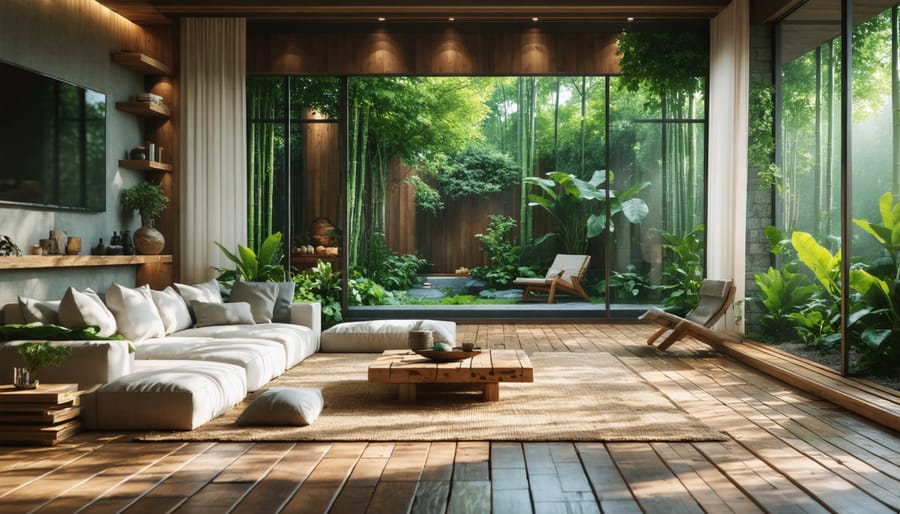
Energy Efficiency and Natural Light
Natural light is one of the most valuable resources in sustainable interior design, offering both environmental benefits and a connection to the outdoors. By maximizing daylight through strategically placed windows, skylights, and glass doors, you can significantly reduce your reliance on artificial lighting and lower energy consumption.
Consider installing energy-efficient windows with proper insulation to maintain comfortable indoor temperatures while allowing plenty of sunlight in. Light-colored walls and reflective surfaces can help bounce natural light deeper into your space, creating a bright, welcoming atmosphere that feels connected to nature.
Smart lighting solutions play a crucial role too. LED bulbs, motion sensors, and programmable systems can reduce energy waste when natural light isn’t sufficient. Think about incorporating adjustable window treatments like blinds or curtains that can help regulate light and temperature throughout the day.
Don’t forget about the placement of furniture and decorative elements – arrange them to allow natural light to flow freely through your space. Plants positioned near windows can thrive in the natural light while helping to create a seamless transition between your indoor and outdoor areas.
Bridging Indoor and Outdoor Spaces
Living Walls and Indoor Gardens
Living walls and indoor gardens represent a beautiful marriage of nature and design, bringing the outdoors inside while contributing to a more sustainable living environment. These vertical gardens not only create stunning focal points but also serve multiple eco-friendly purposes. By incorporating native plants for sustainable spaces, you can create thriving indoor ecosystems that require minimal maintenance while maximizing environmental benefits.
These green installations naturally purify the air by absorbing toxins and releasing oxygen, improving indoor air quality significantly. They also help regulate humidity levels and can reduce energy costs by providing natural insulation. Whether you opt for a full-scale living wall or start with a modest herb garden in your kitchen, these green additions make a meaningful impact on your home’s sustainability.
Popular plant choices for indoor gardens include peace lilies, spider plants, and various ferns, all known for their air-purifying properties. For those new to indoor gardening, starting with low-maintenance succulents or pothos can build confidence while still contributing to your sustainable design goals.
Consider incorporating automated irrigation systems and LED grow lights to maintain your indoor garden efficiently. These modern solutions help ensure your plants thrive while minimizing water waste and energy consumption, making your green space both beautiful and environmentally responsible.
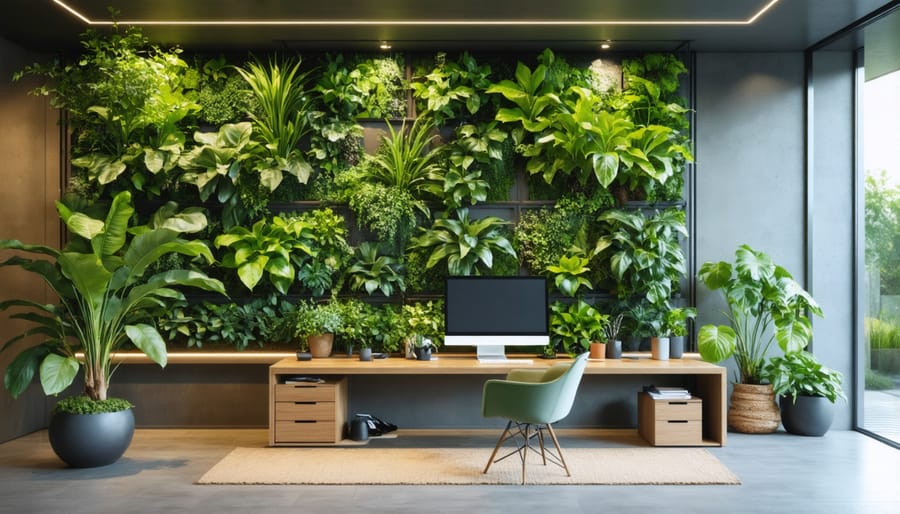
Sustainable Garden Views
Creating a seamless connection between your interior spaces and garden views is a cornerstone of sustainable design. By learning to maximize garden views, you can reduce artificial lighting needs and create a more natural, harmonious living environment.
Start by positioning furniture to face windows and glass doors that overlook your garden. Consider replacing traditional walls with floor-to-ceiling windows or sliding glass doors where appropriate, allowing natural light to flood your space while creating an organic indoor-outdoor flow. These strategic openings not only reduce energy consumption but also provide passive solar heating in winter months.
Incorporate living walls or vertical gardens near window areas to blur the boundaries between inside and out. Choose indoor plants that complement your garden’s palette, creating visual continuity. Installing mirrors strategically can amplify garden views and reflect natural light deeper into your space.
Consider flexible room dividers instead of solid walls to maintain sight lines to the garden. Use natural materials like bamboo screens or hemp curtains that can be adjusted according to seasonal needs. Design conversation areas that embrace the garden perspective, encouraging occupants to connect with nature even while indoors.
Remember to plan for seasonal changes by incorporating adjustable shading solutions like retractable awnings or deciduous trees that provide natural cooling in summer while allowing warming sunlight in winter.
Sustainable Materials for Garden-Connected Spaces
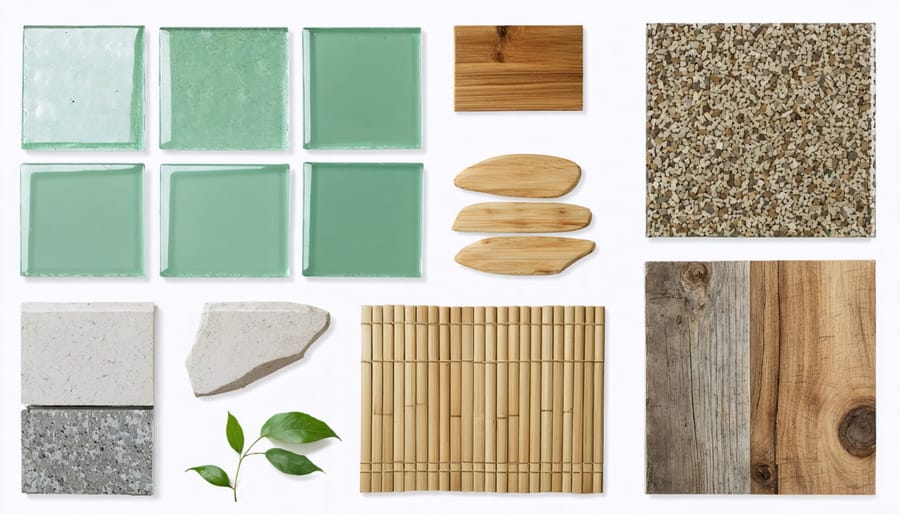
Recycled and Reclaimed Materials
Incorporating recycled and reclaimed materials into your interior design not only reduces environmental impact but also adds unique character to your space. Salvaged wood from old barns or demolished buildings can be transformed into stunning accent walls, shelving units, or custom furniture pieces that tell a story. Reclaimed brick and stone make excellent features for indoor garden rooms or conservatories, creating a seamless transition between indoor and outdoor spaces.
Glass bottles can be repurposed into creative light fixtures or decorative elements, while old metal fixtures can find new life as artistic installations or functional furniture pieces. Consider incorporating recycled plastic materials, which are increasingly being transformed into stylish textile options for upholstery and curtains. Reclaimed tiles can create beautiful mosaic patterns for backsplashes or flooring, each piece contributing to a one-of-a-kind design.
Look for materials with certification from recognized environmental organizations to ensure their sustainable sourcing. Local salvage yards, antique shops, and architectural salvage stores are treasure troves for unique pieces. Remember that using reclaimed materials often requires additional planning and creativity, but the environmental benefits and distinctive character they bring to your space make the extra effort worthwhile.
Local and Low-Impact Options
One of the most impactful ways to embrace sustainable interior design is by choosing locally sourced materials and products. When you opt for local resources, you significantly reduce the carbon footprint associated with transportation while supporting your community’s economy. Look for furniture makers who use wood from sustainably managed local forests, or artisans who create decor items using materials native to your region.
Many local craftspeople specialize in upcycling and repurposing materials, transforming them into unique pieces that tell a story. Consider incorporating reclaimed wood from old barns or historic buildings in your area, which adds character while preventing these materials from ending up in landfills.
Natural materials found in your locality often require less processing and fewer chemical treatments. For example, local stone can be used for flooring or decorative elements, while regional clay can be transformed into beautiful tiles or pottery. These materials not only create a stronger connection to your surroundings but also tend to weather better in your local climate.
Working with local suppliers also allows you to verify their environmental practices firsthand and build relationships that ensure sustainable sourcing for future projects. Many offer custom pieces that perfectly fit your space, reducing waste and ensuring longevity.
Practical Implementation Tips
Ready to make your space more sustainable? Start by conducting an eco-audit of your current interior. Note your energy usage, material choices, and waste patterns. This simple step helps identify areas where you can make the biggest impact.
Choose materials wisely by opting for reclaimed wood, bamboo, or cork flooring. When selecting furniture, look for pieces made from sustainable or recycled materials. Local antique shops and flea markets are treasure troves for unique, sustainable finds that add character to your space.
Maximize natural light by keeping windows unobstructed and using light-reflecting colors on walls. Install energy-efficient LED bulbs and consider smart lighting systems that automatically adjust based on natural light levels. For window treatments, choose natural fabrics or sustainable materials that help with temperature regulation.
Create a connection with nature by incorporating indoor plants that improve air quality. Position seating areas near windows to enjoy garden views, and use natural textures and patterns in your décor elements. Consider installing a small herb garden in your kitchen window for both functionality and beauty.
Focus on multi-functional furniture pieces that reduce the need for excess items. Look for storage solutions made from sustainable materials, and remember that less is often more when it comes to sustainable design. Finally, always consider the lifecycle of products – choose items that can be repaired, repurposed, or recycled when they reach the end of their use.
Embracing sustainable interior design is more than just a trend – it’s a meaningful step toward creating healthier, more environmentally conscious living spaces that benefit both our planet and our well-being. By incorporating natural materials, choosing eco-friendly furnishings, maximizing natural light, and implementing energy-efficient solutions, you can create a beautiful home that reflects your commitment to sustainability. Remember that every small change matters, from selecting low-VOC paints to opting for reclaimed furniture pieces. Start your sustainable design journey by implementing one or two ideas that resonate with you most, then gradually expand your eco-friendly choices as you become more comfortable with the concept. The result will be a harmonious living space that not only looks stunning but also contributes to a more sustainable future for generations to come. Let’s work together to make our homes both beautiful and environmentally responsible.



